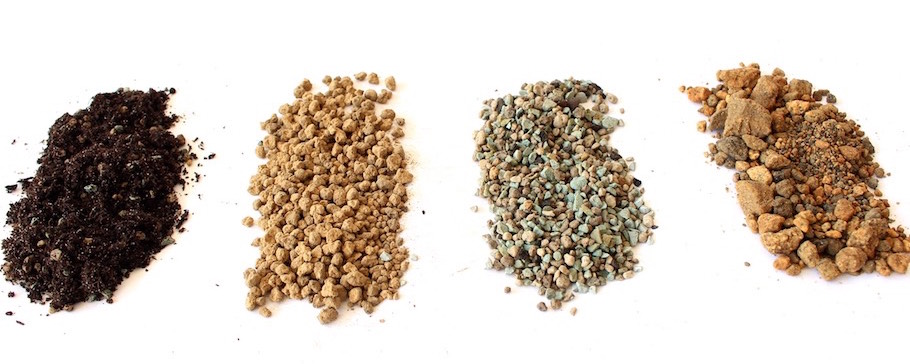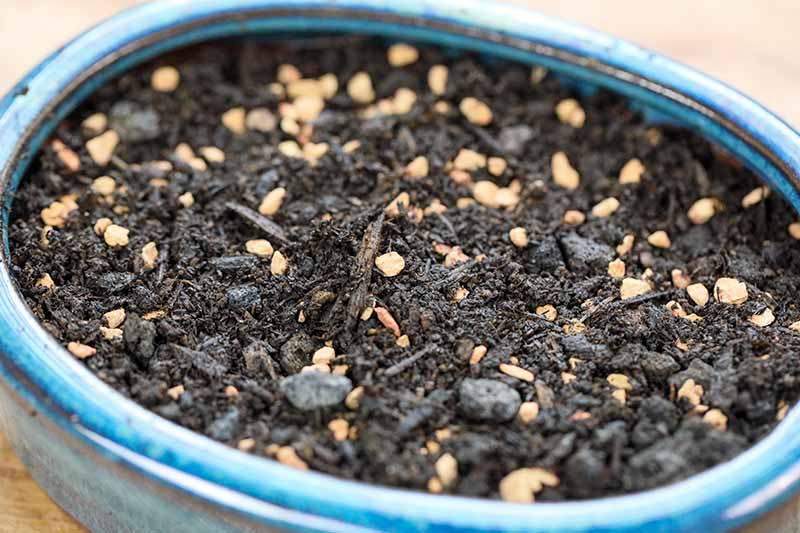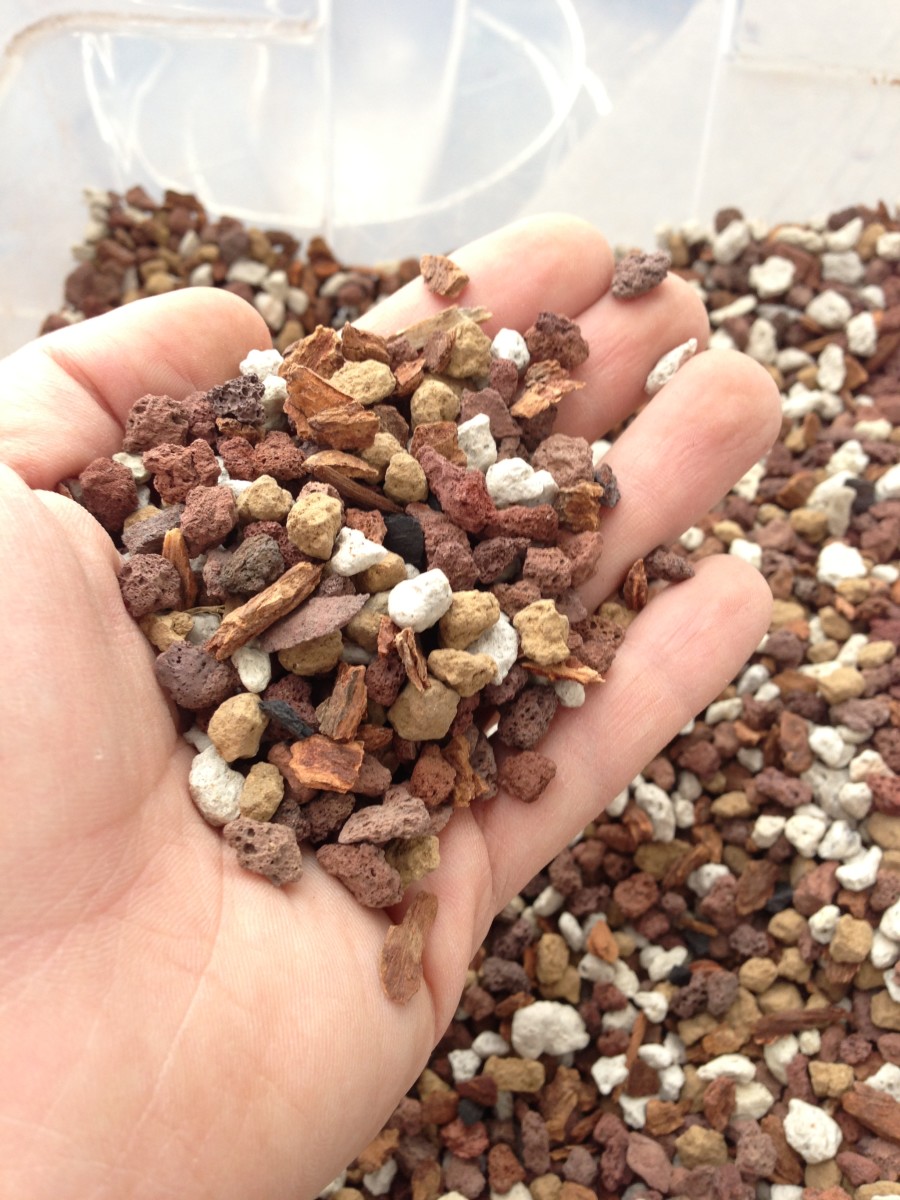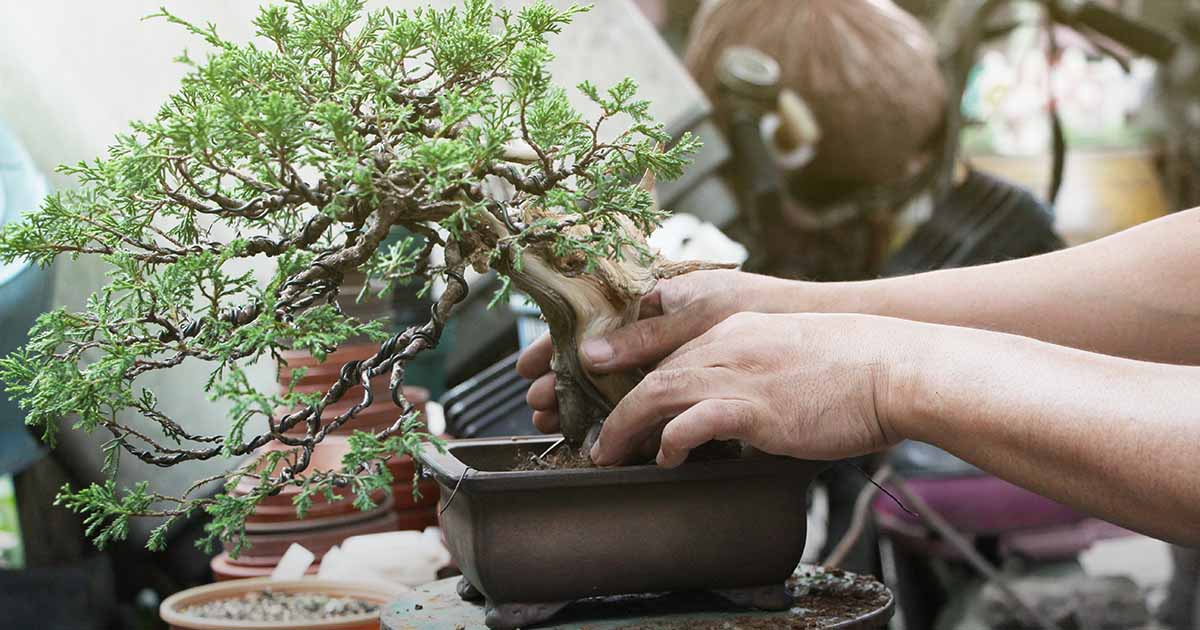In this post, we will examine the different sorts of soil and substrates Utilized in bonsai cultivation, including organic and inorganic solutions.
We'll also find advised soil mixtures for several bonsai species, for example deciduous, coniferous, and indoor versions. From akadama and pumice to moss and river sand, we'll dive in to the interesting world of bonsai soil and assist you understand why It truly is a vital Portion of cultivating these exquisite trees.

Bonsai soil
What is bonsai soil?
Bonsai soil is a specialized type of soil that is specifically formulated for growing and maintaining bonsai trees. Unlike regular garden soil, bonsai soil is well-draining and provides the necessary nutrients and moisture balance for the tree's root system. The composition of bonsai soil is carefully designed to meet the unique needs of bonsai trees, ensuring their health and longevity.
The importance of bonsai soil
The choice of soil plays a crucial role in the success of your bonsai tree. The right soil provides optimal drainage, allowing excess water to flow freely and preventing root rot. It also promotes a healthy and well-developed root system, which is essential for the overall health and growth of the tree. Bonsai soil retains moisture while allowing air to reach the roots, striking the perfect balance for the tree's needs. Choosing the right bonsai soil is essential for maintaining a healthy and thriving bonsai tree.
Bonsai substrates
What are bonsai substrates?
Bonsai substrates refer to the different materials that can be used to create the ideal soil composition for bonsai trees. These substrates are carefully chosen to meet the specific needs of different species of bonsai trees and to ensure proper water drainage and nutrient availability.
Different types of bonsai substrates
There are various types of bonsai substrates available, each with its own unique characteristics and benefits. Some common bonsai substrates include:
- Organic materials: These include ingredients such as bark, peat moss, and coconut coir. Organic substrates help retain moisture and provide essential nutrients to the bonsai tree.
- Inorganic elements: These contain factors like pumice, lava rock, and akadama. Inorganic substrates provide outstanding drainage, making sure that excessive drinking water isn't going to accumulate across the roots in the bonsai tree.
- Soil amendments: These are definitely substances which can be extra on the soil mixture to reinforce its Houses. Samples of soil amendments include perlite, vermiculite, and sand. They Enhance the soil's aeration, h2o-Keeping capability, and nutrient availability.
By comprehension the differing types of bonsai substrates as well as their Houses, you could select the most fitted just one on your bonsai tree's desires.
Organic and natural or Inorganic Soils
Natural and organic soils for bonsai
Organic soils for bonsai are composed of normal materials like bark, peat moss, coconut coir, and compost. These elements give a loaded source of nutrients to the bonsai tree and advertise wholesome root improvement. Natural soils even have fantastic water retention Homes, making certain which the tree gets enough humidity in between watering sessions. Nevertheless, it's important to notice that organic soils may well break down after some time and grow to be compacted, leading to bad drainage and opportunity root problems.
Inorganic soils for bonsai
Inorganic soils for bonsai consist of elements like pumice, lava rock, akadama, and soil amendments like perlite or vermiculite. These materials have superb drainage properties, protecting against waterlogged soil and advertising and marketing aeration across the roots. Inorganic soils are most well-liked by lots of bonsai enthusiasts because of their longevity and talent to supply a secure natural environment for your bonsai tree's root process. Even so, they may need additional frequent watering and additional fertilization, as they don't hold just as much humidity or nutrients as organic soils.
Advantages and drawbacks of using organic and natural and inorganic soils for bonsai
Choosing involving organic and inorganic soils on your bonsai tree relies on many factors, such as the specific species of tree, your local climate, and personal preferences. Listed below are the advantages and disadvantages of each and every:
Natural soils:
- Pros: Present nutrients, superior h2o retention, market healthful root development.
- Disadvantages: May well break down after some time, prospective for bad drainage if not adequately preserved.
Inorganic soils:
- Execs: Exceptional drainage, lengthy-lasting, steady natural environment for roots.
- Downsides: Significantly less h2o retention, may need extra frequent watering and fertilization.
By looking at the benefits and drawbacks of each natural and inorganic soils, you can make an knowledgeable determination determined by the particular needs of the bonsai tree.
Soil parts
Vital parts of bonsai soil
Bonsai soil is typically made up of 3 principal elements: grit, natural and organic matter, and clay. These parts function together to generate The best soil framework for the bonsai tree's root program.
- Grit: Grit, for instance sand or perlite, presents drainage and aeration in the soil. It helps avert waterlogging and will allow air to get to the roots.
- Natural and organic subject: Organic make a difference, for instance compost or bark, offers nutrients to your bonsai tree. In addition it can help keep humidity and Increase the soil's overall construction.
- Clay: Clay particles present some water retention qualities and assistance bind the soil with each other. However, an excessive amount clay may result in weak drainage and compaction.
Function of each soil ingredient
Just about every soil component plays a significant job in making a properly-balanced and healthful surroundings for that bonsai tree's roots.
- Grit: Grit provides the mandatory drainage and aeration in the soil. It stops the roots from sitting down in stagnant h2o, decreasing the risk of root rot and selling General root overall health.
- Organic issue: Organic and natural subject provides necessary nutrients towards the bonsai tree. It aids in humidity retention and contributes to the general structure on the soil.
- Clay: Clay particles aid bind the soil together and supply some h2o retention capacity. Nevertheless, it is important to balance the amount of clay in order to avoid concerns like very poor drainage and compaction.
By comprehension the roles of every soil part, you'll be able to make a well balanced bonsai soil mix that fulfills the particular needs of your respective tree.

Recommended Bonsai soil mixtures
Common bonsai soil mixtures
There are several common bonsai soil mixtures that have been proven effective for various types of bonsai trees. These mixtures typically consist of a combination of inorganic substrates, organic matter, and soil amendments.
Some of the commonly used bonsai soil mixtures include:
- Akadama, pumice, and lava rock: This mixture is popular among bonsai enthusiasts for its excellent drainage and water retention properties.
- Akadama, lava rock, and natural and organic matter: This combination brings together the main advantages of inorganic substrates Together with the nutrient-wealthy Attributes of natural matter.
- Pumice, perlite, and bark: This combination provides fantastic drainage and aeration whilst retaining some humidity and giving nutrients.
These are typically just a couple examples of bonsai soil mixtures, and the ideal combination will depend on the specific requires of your bonsai tree and your climate.
Variables to think about when deciding upon a bonsai soil combination
When choosing a bonsai soil mixture, it's important to look at the subsequent elements:
- Species of bonsai tree: Unique species have various dampness and nutrient requirements. Study the specific desires of the tree to choose a soil mixture that meets its demands.
- Weather: The climate you live in can have an affect on the dampness retention Houses of the soil. Take into account the ordinary humidity and temperature in your neighborhood When selecting a soil mixture.
- Watering behaviors: Your individual watering behavior and regime should align Together with the soil combination you choose. Some mixtures need much more Repeated watering, while some retain humidity for more time intervals.
- Budget: Some soil elements can be dearer than Other people. Take into account your spending plan when choosing a soil mixture.
By having these components into account, you'll be able to go with a bonsai soil combination that gives the very best increasing ailments to your tree.
Deciduous Bonsai soil
Very best soil composition for deciduous bonsai
Deciduous bonsai trees, for example maple or birch, have precise soil prerequisites to assistance their development and overall health. The ideal soil composition for deciduous bonsai ordinarily includes a mixture of organic make any difference, inorganic substrates, and soil amendments.
A advisable soil composition for deciduous bonsai may consist of:
- Akadama: Gives very good drinking water retention when allowing for for drainage. It also releases nutrients little by little with time.
- Pumice: Encourages aeration and drainage while in the soil, protecting against waterlogging.
- Bark or peat moss: Provides organic and natural subject to the soil, giving nutrients and humidity retention.
This soil composition makes certain that the roots of deciduous bonsai trees acquire the appropriate equilibrium of humidity, nutrients, and oxygen for best expansion.

Coniferous and Pine soil
Ideal soil mixture for coniferous and pine bonsai
Coniferous and pine bonsai trees have specific soil requirements due to their water retention needs and preference for acidic soil. An ideal soil mixture for coniferous and pine bonsai should provide good drainage while retaining moisture and maintaining the desired pH level.
A recommended soil mixture for coniferous and pine bonsai may include:
- Akadama: Provides excellent water retention while allowing for sufficient drainage. It releases nutrients slowly over time.
- Pumice: Promotes aeration and drainage in the soil, blocking waterlogged roots.
- Peat moss: Provides organic and natural issue and acidity into the soil, producing a great pH stage for coniferous and pine trees.
This soil combination ensures that the roots of coniferous and pine bonsai trees obtain the right balance of humidity, nutrients, and acidity for his or her unique demands.
Akadama
What exactly is akadama?
Akadama is often a variety of clay soil that is broadly Utilized in bonsai cultivation. It is actually noted for its fantastic h2o retention properties, which make sure a steady supply of dampness to your bonsai tree's roots. Akadama can also be prized for its capability to launch nutrients little by little with time, offering a regular source of nourishment with the tree.
Great things about utilizing akadama in bonsai soil
Employing akadama in bonsai soil presents several Rewards:
- H2o retention: Akadama has Remarkable drinking water retention properties, permitting it to carry moisture devoid of getting waterlogged. This makes sure that the bonsai tree's roots receive a steady offer of h2o, promoting wholesome progress.
- Nutrient release: Akadama gradually releases nutrients in to the soil after some time, supplying a regular supply of nourishment to the bonsai tree. This lowers the need for Repeated fertilization and can help sustain a well balanced nutrient profile.
- Aeration: Even with its h2o retention abilities, akadama also presents sufficient aeration for the bonsai tree's roots. It lets air to reach the root program, preventing difficulties like root rot due to lack of oxygen.
By incorporating akadama into the bonsai soil, you could develop an optimum developing environment to your tree, making certain its health and fitness and vitality.

Lava rock
How lava rock benefits bonsai soil
Lava rock is a popular here component in bonsai soil mixtures due to its excellent drainage and aeration properties. It is typically used in conjunction with other substrates to create the ideal soil composition for bonsai trees.
The benefits of lava rock in bonsai soil include:
- Drainage: Lava rock provides excellent drainage, preventing waterlogging and ensuring that excess water flows freely through the soil. This helps prevent root rot and provides a healthy environment for the roots to thrive.
- Aeration: The porous mother nature of lava rock enables air to circulate within the soil, giving oxygen to your bonsai tree's root process. Appropriate aeration is crucial for balanced root growth and Total tree progress.
- Longevity: Lava rock can be a sturdy product that doesn't stop working simply. This makes sure that the soil structure remains steady over time, lowering the necessity for frequent soil replacements.
Lava rock is accessible in numerous measurements and shapes, letting for personalization depending on the particular requires of one's bonsai tree and soil more info requirements.
Differing kinds of lava rock
You'll find differing kinds of lava rock that can be used in bonsai soil mixtures, like:
- Black lava rock: Black lava rock is usually a generally utilised product in bonsai soil mixtures. It provides superb drainage Homes and provides an aesthetic component to the general presentation in the bonsai tree.
- Pink lava rock: Purple lava rock is yet another preferred preference in bonsai soil mixtures. It offers related drainage and aeration benefits as black lava rock but has a definite reddish shade that provides Visible fascination to the container.
Both equally black and purple lava rocks are greatly obtainable and will be easily integrated into your bonsai soil combination.
Potting
Vital guidelines for successful bonsai potting
Potting is actually a important system in bonsai cultivation, mainly because it immediately impacts the overall health and progress with the tree's roots. Here are several essential strategies for thriving bonsai potting:
- Select the ideal pot sizing: Pick a bonsai pot that enables for root expansion though still furnishing a comfortable healthy. Steer clear of pots which can be also large, since they can lead to too much soil humidity and very poor root advancement.
- Use bonsai wire: Protected the tree within the pot working with bonsai wire to make certain security. This prevents the tree from shifting or turning into uprooted all through watering or robust winds.
- Trim and spread the roots: Prior to potting the bonsai tree, meticulously trim and unfold out the roots. This encourages outward development and prevents root tangling or root-bound challenges.
- Insert mesh screens: Area mesh screens in excess of the drainage holes at the bottom of the pot to prevent soil erosion and be certain right drainage.
- Use contemporary bonsai soil: When potting, generally use refreshing bonsai soil to deliver the required nutrients and exceptional escalating disorders for that roots.
By adhering to these important tips, you can make certain A prosperous potting process and market the general well being and progress of the bonsai tree.
The position of bonsai pots in soil moisture Regulate
Bonsai pots Perform a crucial position in soil dampness Manage, instantly impacting the health and fitness and progress with the tree. Bonsai pots are generally shallow and also have drainage holes, allowing excess drinking water to flee and blocking the soil from getting waterlogged.
The look of bonsai pots encourages evaporation and air circulation, which helps regulate soil humidity stages. The shallow depth and large opening in the pot expose much more floor place of your soil towards the air, aiding in dampness evaporation. This helps prevent the roots from sitting down in excessively damp soil, lowering the risk of root rot and also other water-related difficulties.
Furthermore, the drainage holes in bonsai pots enable any excessive h2o to flee, stopping waterlogged soil and marketing aeration across the roots. Correct aeration is important for the overall health and advancement of the basis program, making sure the bonsai tree receives the necessary oxygen for development.
By making use of bonsai pots designed for helpful dampness Command, you can make a positive ecosystem for your personal bonsai tree's roots and market its General overall health and vitality.
In conclusion, choosing the ideal bonsai soil is important with the good results and overall health of one's bonsai tree. Comprehending the different sorts of bonsai substrates, the job of organic and natural and inorganic soils, The main element elements of bonsai soil, and the different suggested soil mixtures can assist you offer the best expanding situations in your bonsai tree. Whether or not you've got a deciduous or coniferous bonsai, incorporating supplies like akadama and lava rock can boost the soil's drainage and nutrient availability. Moreover, being attentive to potting techniques and utilizing bonsai pots created for dampness Regulate will further more support the thriving expansion within your bonsai tree. With correct knowing and implementation of bonsai soil practices, you could take pleasure in the magnificence and artistry of bonsai cultivation For a long time to come.
